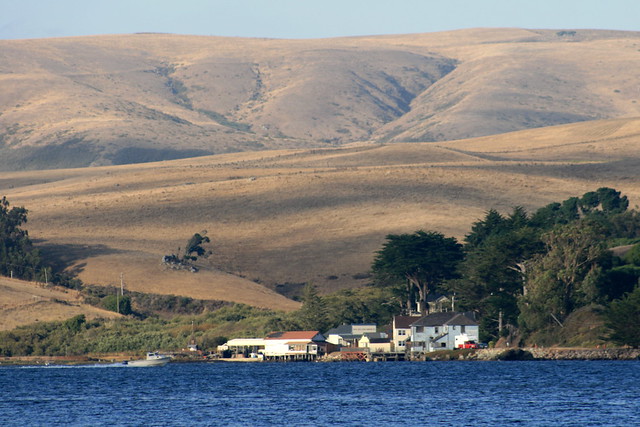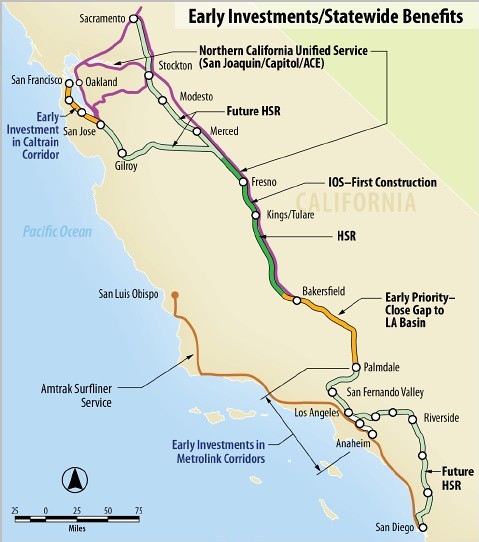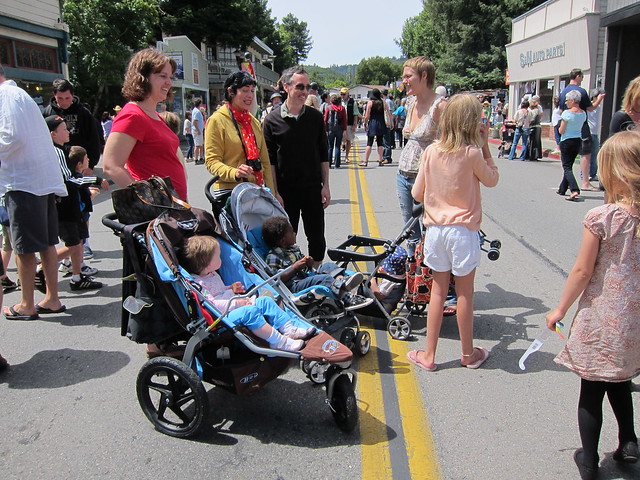Marin Lesser and Greater
- Hard winter: It's harder to providehousing for the homeless this winter thanks in part to San Rafael's crackdown on the homeless. The city has barred pick-up of the homeless in front of St. Vincent's kitchen this year, and organizers have yet to find a church to house people on Thursday nights. (IJ)
- The marriage continues: The final contract between MT and GGT has been approved, allowing GGT to continue on as MT's local service contractor. The deal shaves costs by 3.7 percent and cuts the annual cost increase from 5 percent to 2.7 percent. (IJ)
- MTC shifts priorities: MTC shifted $20 million earmarked for local rail station planning grants to Congestion Management Agencies like TAM. Normally not a problem, the motion was passed spur-of-the-moment without a staff report or motion text, so it's unclear if CMA's would be required to spend the money in any particular way. (Greenbelt Alliance)
- Seminary delays development: A 117-unit redevelopment in Strawberry is on hold pending a review of the plans by Golden Gate Baptist Theological Seminary. The seminary had faced opposition from the Board of Supervisors and is likely retooling the plan to address supervisors' concerns. (IJ)
- Faster trip to the Headlands: Muni's 76-Marin Headlands got a makeover last weekend, with faster and more thorough service to sites in the famed recreation area. Marinites can catch the bus Saturday and Sunday at the Golden Gate Bridge. (Muni Diaries)
- Aged out: Elderly drivers disproportionately cause car crashes, but it can be difficult for them to give up the keys when they're no longer safe behind the wheel. In areas like Sonoma and Marin, where alternatives are few or expensive, it can be even more difficult. (PD)
- And...: A special tax district that requires developers to actually pay for city services is under attack in Santa Rosa. (PD) ... Just because a ridiculous proportion of California drivers are drunk or on drugs, legal or otherwise, while driving doesn't make it any less of a bad idea. (SFist) ... Dave Alden is only cautiously optimistic on community-funded real estate, saying it could open the door to exactly the kinds of abuses the SEC wants to avoid. (WDWGfH?)
The Toll
The roads killed two and left 16 injured since the 15th.
- Emile Smith severely injured himself and killed his passenger, Selena Ross, after Smith crashed his car on Friday in Santa Rosa. Selena Ross was 33. (PD)
- An unnamed man rolled his car and killed himself in Tiburon last Friday. Nobody else was injured. The driver was 53. (IJ)
- Marin's Injured: A driver caused one minor injury while trying to pull into the Drake High School parking lot in San Anselmo. (IJ) ... A driver injured himself in South Marin by striking a rock in the 101 shoulder, causing his car to flip. (IJ) ... A teen driver injured himself and five others while speeding through Novato last week. He has been arrested under suspicion of driving while drunk and high. (IJ) ... A police officer on a motorcycle injured himself in Tiburon by crashing his bike into a driver in another car. The other driver was unhurt. (IJ) ... A drunk driver stopped on Highway 101 and was swiftly struck by two others, one of which was injured in the pile-up. (Patch)
- Sonoma's Injured: A speeding and reckless driver crashed into two cars and flipped his own in Petaluma, injured himself and one of the other two drivers. (PD) ... A driver injured himself by crashing his tanker truck in Salt Point State Park. His accident spilled oil and antifreeze into the sensitive area. (PD) ... A driver crashed his car in Sonoma County last week, injuring himself and no others. (PD) ... A driver struck and injured a pedestrian in West Sonoma. (PD)
Have a tip? Have an article idea? Email us at theGreaterMarin [at] gmail.com.








